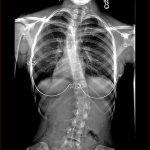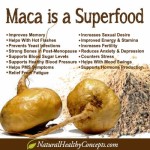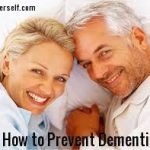Niacin for Heart and Cholesterol
Niacin can be a powerful agent in combating heart disease, when used alone or in combination with other treatments (especially fish oil).
Niacin’s safety record is equally impressive. However, a brief foray into the use of very-slow-release niacin preparations in the 1980s taught us an important lesson: niacin is very safe, if the liver is exposed to it for only a few hours at a time. Niacin is, after all, just vitamin B3. However, 24-hour, day-after-day exposure to niacin over an extended period can be toxic to the liver. Thus, the very-slow-release niacin preparations that yielded sustained, high blood levels of niacin caused liver toxicity in 10-20% of people who used these preparations in the 1980s. Unfortunately, this learning experience left some physicians fearful of recommending niacin to their patients. For this reason, very-slow-release niacin should be avoided.
There are two safe forms of niacin:
- Immediate-release/crystalline niacin is available as a nutritional supplement and is inexpensive and effective. The niacin in each table is released immediately and usually provokes a “hot flush,” a warm, itchy feeling of the skin. For this reason, starting at small doses, such as 250 mg, can be helpful. The dose can be increased gradually (by 250 mg every four weeks) to achieve the desired amount. Doses greater than 500 mg per day should be used only under medical supervision. Some people take their niacin in small doses, three or four times daily, to spread out the dose. This could be unsafe, and I recommend that patients never take immediate-release niacin more than twice a day.
- Extended-release niacin is a time-release preparation, but does not act as slowly as slow-release niacin. This makes it safer than the slow-release preparations that can cause liver side effects. Extended-release niacin also provokes fewer hot flushes than immediate-release niacin. An example is Slo-Niacin®, which is sold over the counter. Niaspan® is an extended-release niacin preparation sold as a prescription drug.
By contrast, slow-release niacin preparations reduce the hot-flush effect by releasing niacin over an extended period of 12 hours or longer. Most of these preparations are unsafe and I do not recommend them. “No-flush” niacin preparations, such as inositol hexaniacinate and nicotinamide, are widely sold as niacin alternatives that do not cause hot flushes. In my experience, however, they simply do not work. In other words, no flush, no effect.
The correct dose of niacin depends on what abnormality you and your doctor are trying to correct. To raise HDL and correct small LDL, a dose of 750-1000 mg a day usually provides full benefit. Increasing this dose to 1500 mg a day may provide slightly greater benefit. To reduce LDL or Lp(a), higher doses (from 1000 mg up to 4000-5000 mg per day) are often used, with higher doses providing greater effects. However, doses this high should be taken only with a physician’s supervision. Keep in mind that it may take three months or longer to realize the full lipid-optimizing benefits of niacin.
As previously noted, the one common though generally harmless side effect of taking niacin use is hot flushes. Some people find them bothersome enough that they want to flush the niacin down the toilet!
The flush, which feels like blushing when one is embarrassed, is usually accompanied by a prickly sensation over the face, neck, and chest. Some women say it feels like the hot flashes of menopause. These flushes are usually short-lived, lasting no more than 20 minutes. Tolerance to this effect occurs with continued niacin use, usually after a few weeks or months. You may experience flushing at the start of your niacin program as well as when you increase your dose. In rare cases, a more marked flushing reaction may occur, resembling a rash or hives. If this occurs, speak to your doctor about whether you should continue using niacin.
You can employ several strategies to greatly minimize or even eliminate niacin-induced hot flushes:
- Drink plenty of water. This is very important and especially helpful when you experience a hot flush: drink two 8- to 12-ounce glasses of water immediately, and the hot flush will almost always disappear within a few minutes. If you need to drink water to block hot flushes but find yourself getting up several times a night to urinate, take your niacin with dinner or breakfast. If you are restricting your fluid intake because of kidney disease, heart disease, water retention, or diuretic use, talk with your doctor before increasing your water intake.
-
Take niacin after consuming a small handful of nuts, such as 5-10 raw almonds, walnuts, or pecans. This will slow niacin’s absorption in the body. You may want to skip this if you are limiting your calorie intake in order to lose weight. While some people recommend taking niacin with a low-fat snack, I discourage this approach, as low-fat snacks like crackers contribute to increased levels of dangerous small LDL.
- Take niacin with an aspirin. When you start niacin and whenever you increase the dose, taking an adult (325-mg) uncoated aspirin tablet can block the niacin flush. After a few weeks or months, when flushing dissipates, changing to a low-dose (81-mg) enteric-coated aspirin can minimize stomach upset and the long-term risk of stomach ulcers and bleeding. Always discuss aspirin use with your doctor, and only use aspirin on a long-term basis with your doctor’s recommendation.
- Avoid alcohol and spicy foods when taking niacin. This strategy is not crucial for everyone, as only some people are sensitive to this phenomenon. You can consume alcohol and spicy foods apart from your use of niacin—for example, having a glass of wine at 7 p.m. and then taking niacin at 9 p.m. Only a few people will have more flushing due to the combination.
Niacin may raise blood sugar by about 4-5 mg/dL at the beginning of therapy. This increase usually dissipates over a few months, and is rarely clinically important. However, increases in blood sugar may be greater if you already have high blood sugar or diabetes. For this reason, niacin should be taken under medical supervision, with gradual increases in dosage, if you have high blood sugar. Having diabetes or pre-diabetes is not necessarily a contraindication to niacin use. In fact, people with these conditions are most likely to benefit from niacin, since diabetes and pre-diabetes are strongly associated with small LDL, low HDL, increased triglycerides, and other abnormalities that are corrected by niacin.4 (Individuals with extremely high triglyceride levels of greater than 1000 mg/dL may require a combination of therapies to achieve effective lipid level control.) Type I (childhood-onset) diabetes, however, is often a contraindication to niacin use, as blood sugar is significantly elevated in this condition.
Niacin therapy should be initiated in patients with low HDL levels (less than 40 mg/dL for men and less than 50 mg/dL for women), particularly if other risk factors are present. Niacin is among the most effective agents known for correcting the multiple causes of heart and vascular disease, and has been shown to greatly diminish the risk of heart attack. Niacin is very safe and easy to use, if used properly. In my experience, over 95% of people who follow these guidelines are able to take niacin with only minimal hot flushes. Potentially serious side effects are almost never seen.
http://www.lifeextension.com/magazine/2007/3/atd/page-01







Leave a Reply